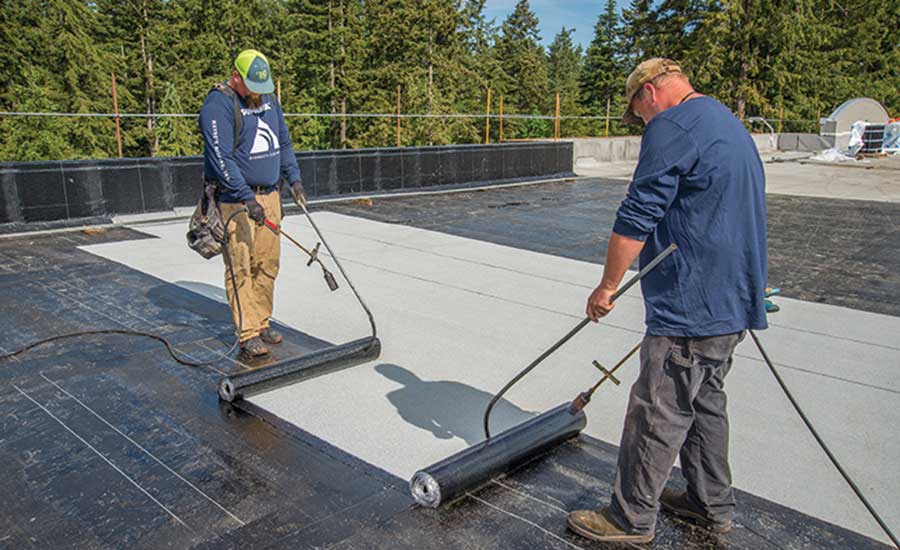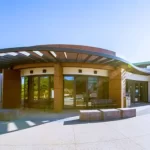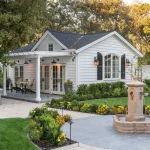A robust commercial roofing system is paramount for the protection and longevity of any commercial property. Ensuring that your building’s roof can withstand the elements and provide a secure environment is a vital aspect of property management. In this article, we will delve into the various types of commercial roofing systems, their advantages and disadvantages, as well as maintenance and repair considerations. Additionally, we will introduce you to GCCS Roofing, Inc., a trusted name in the roofing industry.
I. Introduction
A. Importance of a Robust Commercial Roofing System
The roof of a commercial property is more than just a shield against rain and sun; it plays a pivotal role in maintaining the structural integrity of the building and ensuring the safety of occupants. A well-designed and maintained commercial roofing system is essential for protecting valuable assets and investments within the property.
B. Introduction to GCCS Roofing, Inc.
GCCS Roofing, Inc. is a reputable roofing company with a wealth of experience in providing tailored roofing solutions for commercial properties. Their commitment to quality and expertise in the field makes them a valuable partner for businesses seeking top-tier roofing services.
II. Types of Commercial Roofing Systems
A. Single-Ply Roofing
EPDM (Ethylene Propylene Diene Monomer)
- EPDM roofing membranes are known for their durability and resistance to UV radiation. They provide excellent protection against the elements and are relatively easy to install.
TPO (Thermoplastic Olefin)
- TPO roofing systems offer energy efficiency benefits and are highly reflective, which can help reduce cooling costs. They are also resistant to dirt, algae, and mold growth.
PVC (Polyvinyl Chloride)
- PVC roofing is renowned for its chemical resistance and fire-retardant properties. It is a durable option that can withstand extreme weather conditions.
B. Built-Up Roofing (BUR)
Multiple Layers of Bitumen
- BUR roofing systems consist of multiple layers of bitumen and reinforcing fabrics. They are known for their durability and resistance to heavy foot traffic.
Gravel Surfacing
- Many BUR roofs have a layer of gravel on top, providing an extra layer of protection and insulation. However, gravel can add weight to the roof.
C. Metal Roofing
Standing Seam
- Standing seam metal roofs offer exceptional longevity and require minimal maintenance. They are resistant to fire, insects, and rot.
R-panel
- R-panel metal roofs are cost-effective and provide reliable protection. They are often used in industrial and agricultural settings.
Metal Shingles
- Metal shingles mimic the appearance of traditional roofing materials like wood or asphalt while offering the durability and longevity of metal.
III. Advantages and Disadvantages of Commercial Roofing Systems
A. Single-Ply Roofing
Energy Efficiency
- Single-ply roofing systems, especially TPO and PVC, offer excellent energy efficiency due to their reflective properties. They can help reduce heating and cooling costs.
Vulnerability to Punctures
- While single-ply roofs are generally durable, they can be vulnerable to punctures from sharp objects or heavy debris.
B. Built-Up Roofing (BUR)
Durability
- BUR roofing systems are highly durable and can last for decades with proper maintenance. They can withstand foot traffic and harsh weather conditions.
Installation Complexity
- Installing BUR roofing systems can be labor-intensive and may require specialized skills, making them potentially more expensive upfront.
C. Metal Roofing
Longevity
- Metal roofing systems have an impressive lifespan, often exceeding 50 years. They require minimal maintenance and can withstand extreme weather conditions.
Cost Considerations
- While metal roofing is a long-term investment, the initial cost can be higher compared to other roofing materials. However, the durability and longevity offset the upfront expense.
IV. Maintenance and Repairs of Commercial Roofing Systems
A. Regular Inspections
Identifying Wear and Tear
- Regular inspections can help detect signs of wear and tear, such as loose seams, rust spots, or damaged shingles. Addressing these issues promptly can prevent more significant problems.
Detecting Leaks and Moisture Intrusion
- Early detection of leaks and moisture intrusion is crucial to prevent water damage and mold growth within the building.
B. Repairing Commercial Roofing Systems
Patching and Sealing
- Minor damage to roofing systems can often be repaired with patching and sealing techniques. Prompt repair prevents issues from escalating.
Replacing Damaged Sections
- In cases of extensive damage, replacing damaged sections or even the entire roof may be necessary. Professional roofing services can assess the extent of the damage and provide appropriate solutions.
V. Choosing the Right Commercial Roofing System
A. Factors to Consider
Climate and Weather Conditions
- The local climate plays a significant role in choosing the right roofing system. Areas prone to heavy rainfall, snow, or extreme temperatures may require specific roofing materials.
Budget and Long-Term Costs
- Consider your budget and long-term cost projections when selecting a roofing system. While some materials have higher upfront costs, they may offer substantial savings in maintenance and energy efficiency over time.
Energy Efficiency
- Evaluate the energy efficiency of roofing materials, as this can impact heating and cooling costs. Energy-efficient roofing materials may qualify for tax incentives or rebates.
B. Consulting GCCS Roofing, Inc.
Expertise and Consultation Services
- GCCS Roofing, Inc. offers expert guidance in choosing the right roofing system for your commercial property. Their team can assess your specific needs and provide customized solutions.
Tailored Roofing Solutions
- GCCS Roofing, Inc. prides itself on delivering tailored roofing solutions that prioritize durability, energy efficiency, and budget considerations. Their expertise ensures that your commercial roofing system meets all your requirements.
In conclusion, a well-designed and maintained commercial roofing system is crucial for the protection and longevity of commercial properties. Whether you opt for single-ply roofing, built-up roofing, or metal roofing, each system comes with its advantages and considerations. Regular inspections and prompt repairs are essential to extend the life of your roofing system. When choosing the right commercial roofing system, consult experts like GCCS Roofing, Inc., who can provide customized solutions to meet your specific needs and ensure the protection of your valuable assets.




Your comment is awaiting moderation.
Thanks for the article https://kinocirk.ru/